SafeAssign cannot detect ChatGPT or AI-generated content. SafeAssign is a plagiarism detection tool that checks student submissions for copied work by comparing it against its extensive database.
However, it is designed to catch verbatim plagiarism and is not equipped to detect AI-generated content like ChatGPT. This means that SafeAssign relies on existing material and may not flag content generated by AI. While universities may have other methods to detect ChatGPT, SafeAssign alone is not capable of identifying it.

Credit: www.scalenut.com
Introduction To Safeassign’s Capabilities
SafeAssign does not currently detect ChatGPT-generated content, as it is primarily designed to catch verbatim plagiarism in student submissions such as essays and research papers. The tool compares submissions against existing material, and if AI-generated content does not match any of them, SafeAssign is unlikely to flag it.
SafeAssign is a powerful tool designed to maintain academic integrity by detecting instances of plagiarism in students’ submissions. By comparing submitted work against a vast database of academic content and internet sources, it aims to identify any copied or unoriginal material.
What Safeassign Is Designed To Detect
SafeAssign is specifically engineered to identify verbatim plagiarism, where students directly copy content from other sources without proper citation. It scrutinizes text to uncover similarities with existing academic papers, articles, and other online content. Moreover, it aims to detect instances of content recycling, where students submit their previous work without authorization.
Limitations Of Safeassign
While SafeAssign is proficient at identifying direct text matching, it may have limitations in detecting paraphrased or AI-generated content. The effectiveness of SafeAssign largely depends on the comprehensiveness and relevance of the database it searches. As a result, there is a possibility that it may not flag AI-generated content, such as that generated by ChatGPT, if it does not correspond with existing sources in its database.
Chatgpt’s Rise And Academic Concerns
ChatGPT, an AI language model developed by OpenAI, has gained widespread popularity due to its ability to generate human-like text. While this technology has numerous practical applications, its use in academic settings has raised concerns about potential plagiarism and academic integrity.
The Emergence Of Chatgpt
ChatGPT is a state-of-the-art language model that uses deep learning to generate human-like responses to textual prompts. It has been widely adopted for various purposes, including content generation, customer service chatbots, and educational assistance.
Why Academics Are Worried
Academics are concerned about the potential misuse of ChatGPT in academic settings. The AI’s ability to produce coherent and contextually relevant text raises questions about its impact on student work, research papers, and academic integrity. This has prompted discussions about the need for effective plagiarism detection and prevention measures to address the challenges posed by AI-generated content.
How Safeassign Works
SafeAssign, a plagiarism detection tool, does not have the capability to detect ChatGPT or AI-generated content. It is designed to catch verbatim plagiarism by comparing student submissions to its extensive database of existing material. Therefore, ChatGPT usage would not be flagged by SafeAssign.
The Mechanics Of Safeassign’s Detection
SafeAssign operates by comparing submitted assignments against a vast database of academic content, internet sources, and student papers. It scrutinizes the text for similarities and matches, flagging potential instances of plagiarism.
Database Comparison And Ai-generated Content
SafeAssign’s effectiveness hinges on the comprehensiveness of its database. If AI-generated content, such as ChatGPT, does not align with any existing material in the database, SafeAssign is unlikely to flag it as plagiarized. This poses a challenge for the tool in detecting AI-generated content.
Can Safeassign Recognize Chatgpt’s Footprint?
SafeAssign, a plagiarism detection tool, is unable to detect ChatGPT or AI-generated content. It focuses on identifying verbatim plagiarism by comparing submissions to its extensive database of essays and research papers. Since ChatGPT’s content is not included in this database, it is unlikely to be flagged by SafeAssign.
Analyzing Safeassign’s Effectiveness Against Ai
SafeAssign is a popular plagiarism detection tool used by many universities and colleges. It is designed to check student submissions against a vast database of existing materials to identify any copied content. However, when it comes to AI-generated content like ChatGPT, SafeAssign’s effectiveness is put to the test.Reports And Studies On Detection Capabilities
Various reports and studies have been conducted to test SafeAssign’s ability to detect AI-generated content like ChatGPT. These studies have shown that SafeAssign’s detection capabilities are highly dependent on the size and comprehensiveness of its database. While it can detect instances of verbatim plagiarism, it may not always recognize AI-generated content that does not match any existing materials in its database. In conclusion, SafeAssign’s ability to detect ChatGPT and other AI-generated content is limited. While it may detect instances of verbatim plagiarism, it may not recognize AI-generated content that does not match any existing materials in its database. As AI technology continues to evolve, it is important for plagiarism detection tools like SafeAssign to keep pace and develop new methods to identify AI-generated content.The Verbatim Plagiarism Myth
SafeAssign, a plagiarism detection tool, is designed to catch verbatim plagiarism by checking student submissions against its extensive database. However, it cannot detect ChatGPT or AI-generated content as it relies on existing material. So, no, SafeAssign does not detect ChatGPT.
The Verbatim Plagiarism Myth Verbatim plagiarism, also known as word-for-word plagiarism, is the act of copying someone else’s work word for word without giving credit to the original author. This type of plagiarism is often considered the most severe form of academic misconduct, and many students try to avoid it by using paraphrasing tools or AI-generated content such as ChatGPT. However, there is a common myth that verbatim plagiarism detection tools like SafeAssign can only detect exact matches of text, making it safe to use AI-generated content without attribution. In this section, we will explore the truth behind this myth and why verbatim plagiarism detection is not enough to ensure academic integrity. Understanding Verbatim Plagiarism Verbatim plagiarism is not limited to copying and pasting someone else’s work. It also includes using synonyms or rephrasing the original text while keeping the same sentence structure and meaning. In other words, if you copy someone else’s work and change a few words here and there, it is still considered verbatim plagiarism. Verbatim plagiarism is a serious offense because it undermines the principles of originality and honesty in academic work. Why Verbatim Plagiarism Detection Is Not Enough While verbatim plagiarism detection tools like SafeAssign are effective in catching exact matches of text, they are not foolproof. AI-generated content like ChatGPT can produce unique and original text that may not match any existing database of academic work. Therefore, relying solely on verbatim plagiarism detection is not enough to ensure academic integrity. It is essential to use a combination of techniques such as contextual analysis and citation checking to detect any form of plagiarism accurately. In conclusion, the verbatim plagiarism myth is just that – a myth. Verbatim plagiarism detection tools like SafeAssign can detect more than just exact matches of text, and AI-generated content like ChatGPT is not immune to plagiarism detection. To ensure academic integrity, students must understand the different types of plagiarism and use a combination of techniques to detect and avoid them.
Credit: gowinston.ai
Exploring The Limits Of Detection Tools
SafeAssign, a plagiarism detection tool, is not designed to detect ChatGPT or AI-generated content. It checks student submissions against its extensive database to identify verbatim plagiarism. However, if the AI-generated content does not match any existing material, SafeAssign is unlikely to flag it.
SafeAssign is a widely used plagiarism detection tool that checks submitted academic papers and essays for copied content. However, many students wonder whether SafeAssign can detect AI-generated text like ChatGPT. To answer this question, we need to explore the limits of detection tools and compare SafeAssign with other plagiarism detection tools.
Comparing Safeassign With Other Plagiarism Tools
SafeAssign is just one of many plagiarism detection tools available today. Other popular tools include Turnitin, Grammarly, and Copyscape. These tools work by comparing submitted text against a vast database of previously submitted academic papers, journals, and websites. However, the effectiveness of these tools depends on the size and comprehensiveness of their databases.
Compared to other tools, SafeAssign has a relatively small database, which limits its ability to detect AI-generated text like ChatGPT. However, SafeAssign is still effective at detecting verbatim plagiarism and can flag content that matches existing sources in its database.
Challenges In Detecting Ai-generated Text
Detecting AI-generated text like ChatGPT poses several challenges for plagiarism detection tools like SafeAssign. One of the main challenges is that AI-generated text is often unique and does not match any existing sources in the detection tool’s database. This makes it difficult for the tool to flag the content as potentially plagiarized.
Another challenge is that AI-generated text can be easily edited or paraphrased to avoid detection. This means that even if a detection tool like SafeAssign does flag the content, it may not be able to determine the extent of the plagiarism or whether it was intentional.
Overall, while SafeAssign is a useful tool for detecting verbatim plagiarism, it is not effective at detecting AI-generated text like ChatGPT. As AI technology continues to advance, plagiarism detection tools will need to adapt to keep up with new forms of plagiarism.
Mitigating Academic Dishonesty In The Ai Era
SafeAssign, a plagiarism detection tool, is not capable of detecting ChatGPT or AI-generated content. It primarily focuses on identifying verbatim plagiarism by comparing student submissions to its extensive database of existing material. Therefore, it may not be effective in detecting AI cheating or plagiarism in the AI era.
Strategies For Educators
In today’s era, with the advancements in technology, it has become easier for students to cheat and get away with it. However, educators are not far behind in adopting new technologies to mitigate academic dishonesty. One of the strategies that educators can use is to create assignments that cannot be easily replicated using AI. For instance, assignments that require critical thinking, analysis, and interpretation cannot be generated by AI. Another strategy is to create assignments that require students to demonstrate their understanding of the subject matter, rather than simply regurgitating information. This can be done by incorporating personalized questions that require students to apply the concepts they have learned.The Role Of Technology In Preventing Cheating
Technology has played a significant role in preventing cheating in the AI era. SafeAssign is one such tool that has gained popularity among educators. SafeAssign is a plagiarism detection tool that checks for copied work in student submissions. Although SafeAssign cannot detect ChatGPT or AI in general, it can identify verbatim plagiarism, which is a common form of academic dishonesty. SafeAssign compares student submissions against a vast database that includes internet sources, prior submissions, and academic papers. In addition to SafeAssign, other tools like Turnitin and plagiarism checker can also be used to prevent cheating. In conclusion, academic dishonesty is a serious issue that needs to be addressed in the AI era. Educators can adopt strategies like creating personalized assignments and incorporating critical thinking questions to prevent cheating. Additionally, technology tools like SafeAssign, Turnitin, and plagiarism checker can be used to detect plagiarism. By working together, educators and technology can ensure academic integrity and prevent cheating in the AI era.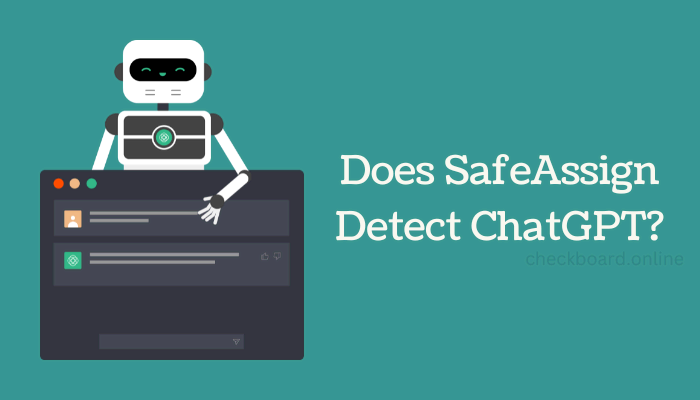
Credit: checkboard.online
The Future Of Plagiarism Detection
As technology continues to advance, the landscape of plagiarism detection is also evolving. With the rise of AI-generated content, traditional methods of identifying plagiarized material are facing new challenges. In this context, it’s crucial to consider the future of plagiarism detection and the potential innovations that will shape it.
Innovations On The Horizon
Advancements in artificial intelligence (AI) and machine learning are paving the way for innovative approaches to plagiarism detection. AI algorithms are becoming increasingly adept at generating human-like text, blurring the lines between original and derivative content. As a result, the development of more sophisticated detection systems that can discern AI-generated content from original work is on the horizon.
Preparing For Advancements In Ai-generated Content
As AI continues to play a prominent role in content creation, educational institutions and online platforms must prepare for the challenges posed by AI-generated content. This involves enhancing the capabilities of plagiarism detection tools to effectively identify and differentiate between legitimate, original content and AI-generated material. Additionally, educators and content creators need to stay informed about the latest developments in AI-generated content to ensure that their work remains authentic and free from plagiarism.
Conclusion: The Ongoing Battle Against Ai Plagiarism
As the use of AI continues to grow, the battle against AI plagiarism is an ongoing challenge for academic institutions. With the emergence of advanced language models like ChatGPT, traditional plagiarism detection tools face limitations in identifying AI-generated content. This raises concerns about maintaining academic integrity and ensuring the authenticity of student submissions.
Summarizing The Capabilities Of Safeassign
SafeAssign is a powerful tool designed to detect verbatim plagiarism by comparing student submissions against a vast database of academic essays, internet sources, and prior submissions. While it excels at identifying copied text, it currently has limitations in detecting AI-generated content, such as ChatGPT.
Looking Ahead: The Evolution Of Academic Integrity
As the landscape of academic integrity continues to evolve, there is a pressing need for innovative solutions to combat AI plagiarism. Academic institutions and technology providers must collaborate to develop advanced detection methods capable of identifying AI-generated content. This evolution is crucial in safeguarding the integrity of academic assessments and upholding the standards of originality.
Frequently Asked Questions
Can Safeassign See If You Use Chatgpt?
No, SafeAssign cannot detect if you use ChatGPT. SafeAssign is a plagiarism detection tool that checks for copied work in student submissions, but it is designed to catch verbatim plagiarism and does not have the capability to detect AI-generated content like ChatGPT.
Can Safeassign Detect Ai Content?
Yes, SafeAssign is not designed to detect AI-generated content, including ChatGPT. It primarily checks for verbatim plagiarism in its extensive database. If the AI-generated content doesn’t match any existing material, SafeAssign is unlikely to flag it.
Can Chatgpt Be Detected On Blackboard?
No, Blackboard cannot detect ChatGPT. It uses SafeAssign for plagiarism checks, which relies on existing databases and may not catch AI-generated content.
Can Examiners Detect Chatgpt?
Yes, examiners can detect ChatGPT to some extent, but it’s not always guaranteed. Whether the risk is worth it is up to you.
Conclusion
SafeAssign, a plagiarism detection tool, is not capable of detecting ChatGPT or AI-generated content. SafeAssign primarily focuses on verbatim plagiarism and compares student submissions with its extensive database of essays and research papers. However, if the AI-generated content does not match any existing material in the database, SafeAssign is unlikely to flag it as plagiarized.
Therefore, it is important for educational institutions to explore additional measures to detect and prevent AI cheating and plagiarism.

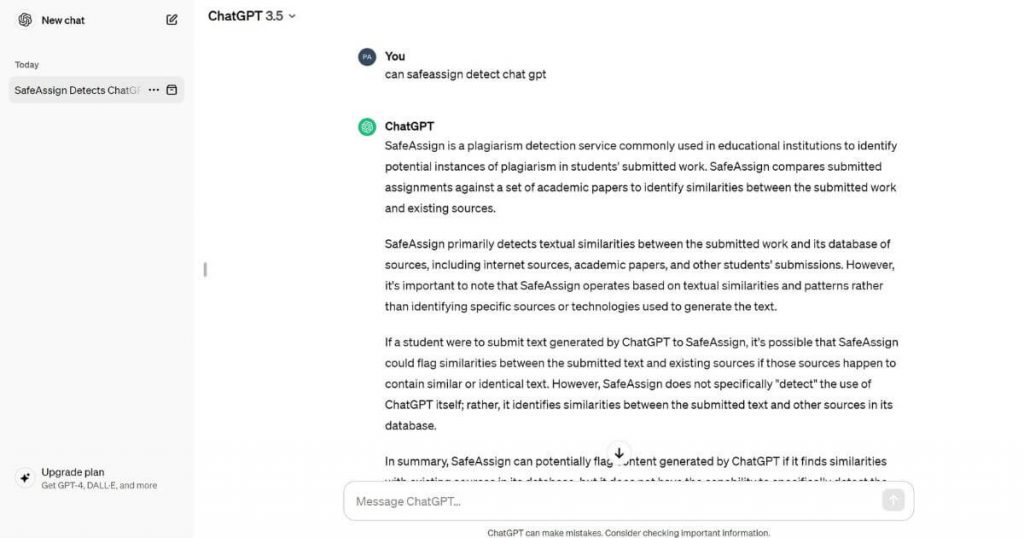




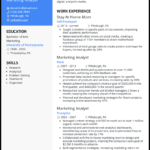

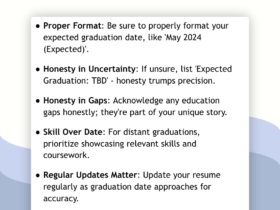


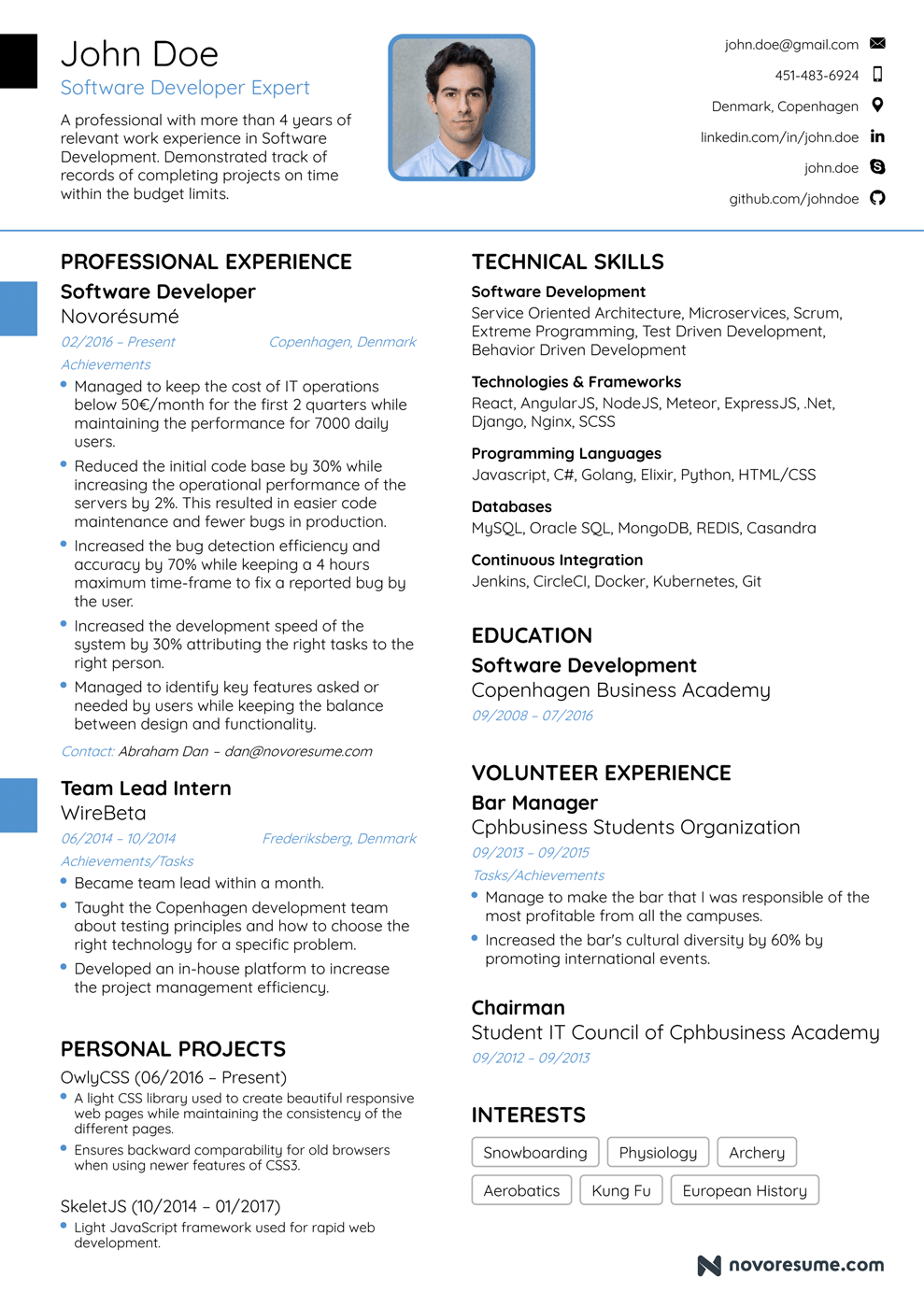
Leave a Reply